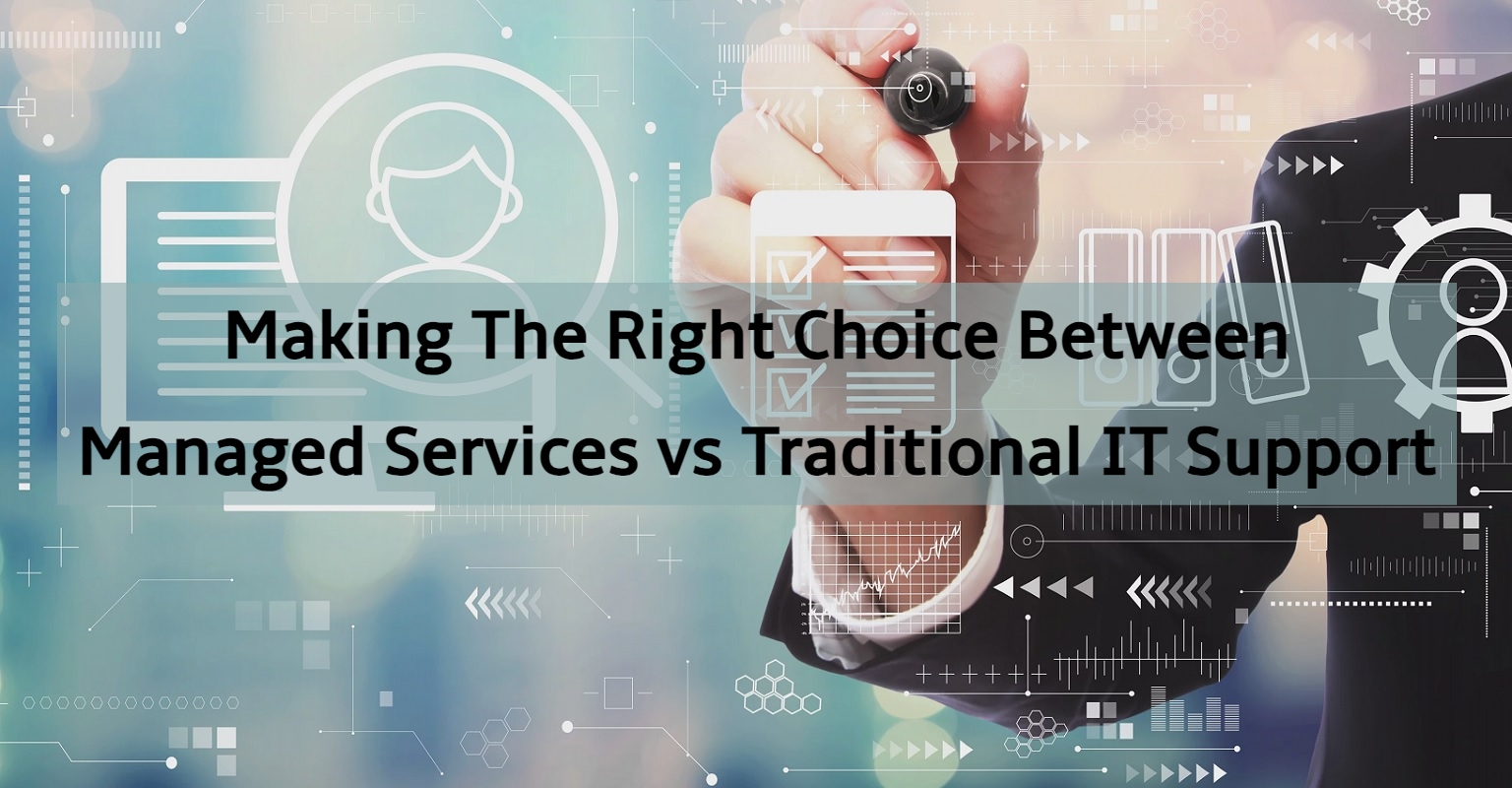When it comes to managing IT infrastructure, businesses often involve handling multiple responsibilities including limited budgets and technical staff. They find themselves weighing the pros and cons of two options such as managed services and traditional IT support. In this article, we will explore the differences between Managed Services vs. Traditional IT Support and also discuss the benefits of each option is essential for making the right choice that aligns with your business goals and requirements.
What are Managed Services?
Managed Services is a comprehensive IT support model where a third-party service provider takes responsibility for managing and maintaining a company’s IT infrastructure and services. These providers offer proactive monitoring, maintenance, and support, often delivered remotely, through a subscription-based model. Managed Services providers (MSPs) offer a wide range of services, including network monitoring, security management, data backup and recovery, cloud solutions, and more. The focus is on preventing issues, optimizing performance, and ensuring business continuity.
What is Traditional IT Support?
Traditional IT Support refers to the conventional method of managing and maintaining an organization’s information technology (IT) infrastructure. It involves the use of an in-house IT department or hiring external IT service providers on an as-needed basis. With Traditional IT Support, businesses primarily rely on reactive problem-solving, where IT professionals are called upon to address issues and resolve technical problems after they occur.
Key Differences Between Managed Services vs. Traditional IT Support
The main distinction between managed services and traditional IT support lies in their approach to IT management. Managed services focus on proactive monitoring, preventive maintenance, and regular updates to prevent issues before they occur. In contrast, traditional IT support tends to be more reactive, with IT personnel responding to problems after they arise.
Advantages of Managed Services
Managed services offer several advantages that make them an attractive option for businesses:
a. Predictable Costs: Managed services are often provided on a subscription or fixed-fee basis, allowing businesses to budget and forecast their IT expenses more accurately.
b. Proactive Monitoring: Managed service providers continuously monitor IT systems, identifying potential issues early on and resolving them before they cause significant disruptions.
c. Access to Expertise: Managed service providers employ a team of skilled professionals who specialize in various aspects of IT, ensuring that businesses have access to a wide range of expertise.
d. Scalability: Managed services can easily scale with business growth. As companies expand, the provider can adjust the services and resources to meet increasing demands.
Benefits of Traditional IT Support
While managed services offer numerous advantages, traditional IT support still has its place in certain situations:
a. Customization: In-house IT teams have an intimate understanding of a company’s specific needs and can tailor solutions accordingly.
b. Immediate Response: With an in-house IT team, businesses can expect immediate response times since the IT personnel are physically present on-site.
c. Control and Security: Some companies, particularly those handling sensitive data or in highly regulated industries, may prefer to maintain complete control over their IT infrastructure to ensure security and compliance.
Making the Right Choice
Choosing between traditional IT support and managed services ultimately depends on the unique needs and circumstances of each organization. Consider the following factors when making a decision:
Budget: Managed services typically involve predictable monthly fees, making it easier to budget for IT support. In contrast, traditional IT support costs may vary depending on the number of issues and support requests.
Scalability: If your organization anticipates growth or fluctuating demands, managed services can offer the flexibility and scalability needed to adapt to changing requirements.
Expertise: Assess the skill set and breadth of knowledge required to effectively manage your IT infrastructure. If your organization lacks specialized expertise in-house, managed services can provide access to a wide range of technical skills.
Risk tolerance: Evaluate your organization’s risk tolerance and regulatory compliance needs. In industries with stringent security and compliance requirements, in-house IT departments may offer greater control and reassurance.
Conclusion
Ultimately, both managed services and traditional IT support have their merits, and the choice depends on individual business needs. Some organizations may opt for a hybrid approach, combining aspects of both models to achieve the perfect balance between control, cost-effectiveness, and peace of mind.
Don’t let your IT infrastructure hold you back. Act now and ensure that your business stays ahead of the competition. Explore the benefits of managed services or assess the potential of your in-house IT team. Making the right choice and investing in the IT solution with Computer Support Professionals, will propel your business to new heights of efficiency, security, and growth.




